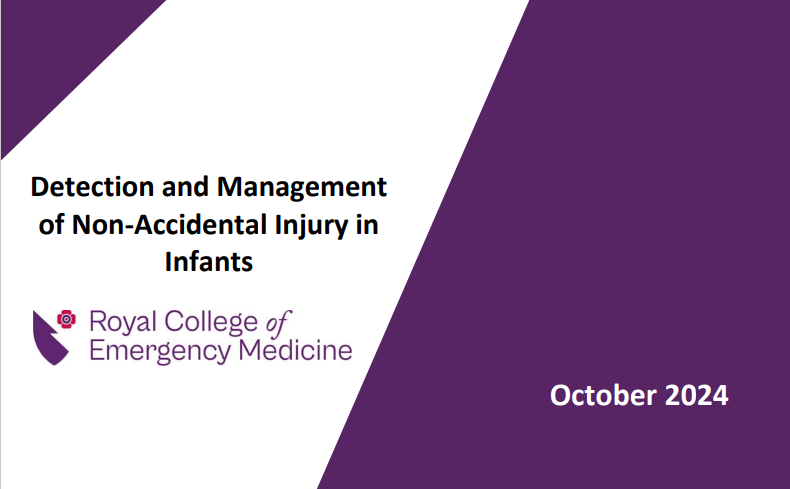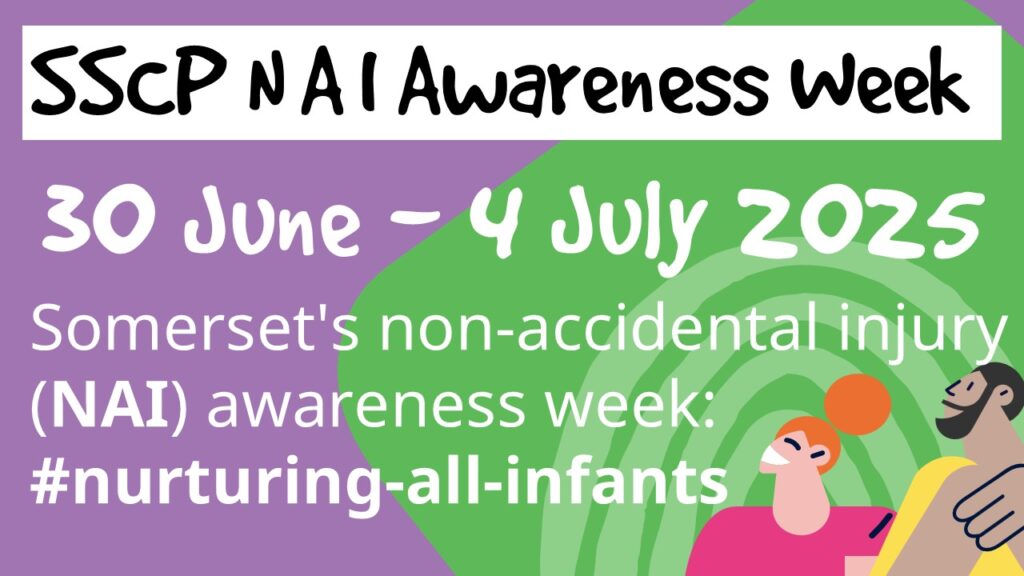As part of the SSCP NAI Awareness Week 2025 (#nurturing_all_infants), Somerset Foundation Trust safeguarding team have highlighted this Detection and Management of Non-Accidental Injury (NAI) in Infants (RCEM Guidance) to share with partners.
The guidance is designed by the Royal College of Emergency Medicine (RCEM) to support emergency department (ED) clinicians in the early recognition, assessment, and management of non-accidental injuries (NAI) in infants.
Read the full guidance from The Royal College of Emergency Medicine HERE
Infants are particularly vulnerable due to their dependency, limited mobility, and inability to communicate. The document emphasizes the legal, ethical, and clinical responsibilities of healthcare professionals in safeguarding children.
Key clinical insights
Risk Awareness
- Infants under 1 year are at highest risk of fatal abuse.
- Mortality rate: 28 per million (NSPCC, 2024).
- Abuse is often repetitive and escalating if not identified early.
Red Flags for non-accidental injuries (NAI)
- Bruising in non-mobile infants (e.g., under 6 months).
- Fractures, especially rib or metaphyseal.
- Burns with clear demarcation or unusual patterns.
- Head injuries without a plausible explanation.
- Inconsistent or changing histories from caregivers.
Information Sharing
Prompt communication between:
- ED staff
- Primary care
- Health visitors
- Children Social Care
Use of Child Protection Information Sharing (CP-IS) systems
Decision-Making Framework
- Use structured tools (e.g., safeguarding checklists).
- Escalate concerns based on clinical judgment, not just certainty.
- Document who was consulted, what was discussed, and actions taken.
Professional Collaboration
Multidisciplinary team (MDT) discussions are vital.
Involve:
- Paediatrics
- Radiology
- Children Social care
- NHS Safeguarding Services
Parental Communication
- Be transparent but sensitive.
- Explain that safeguarding is a routine part of care.
- Avoid accusatory language; focus on child safety.
Support Systems
Ensure:
- 24/7 access to safeguarding advice.
- Clear referral pathways.
- Staff are supported when raising concerns.
Recommendations for ED Practice
- Training & Induction
- Mandatory safeguarding training for all ED staff.
- Include real-case scenarios and escalation pathways.
- Documentation
- Record injuries with diagrams and photos (if appropriate).
- Note exact words used by caregivers.
- Referral & Follow-Up
- Refer to paediatrics and Children Social Care when in doubt.
- Ensure follow-up appointments are arranged and attended.
- Culture of Vigilance
- Encourage a non-judgmental, proactive approach.
- Support staff who raise concerns—no fear of reprisal.


